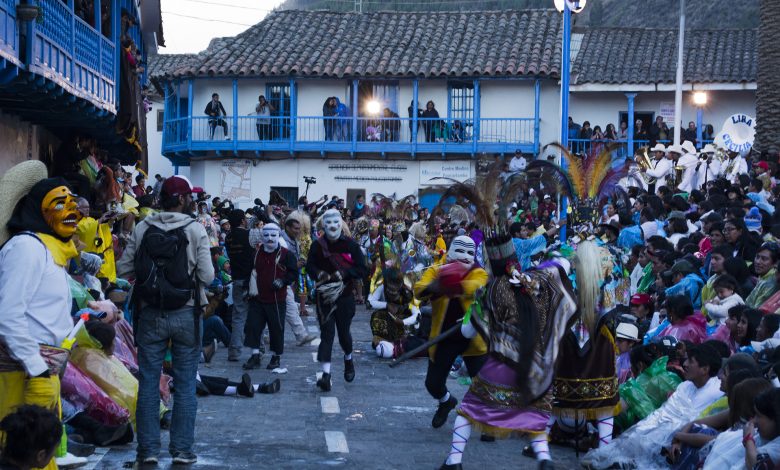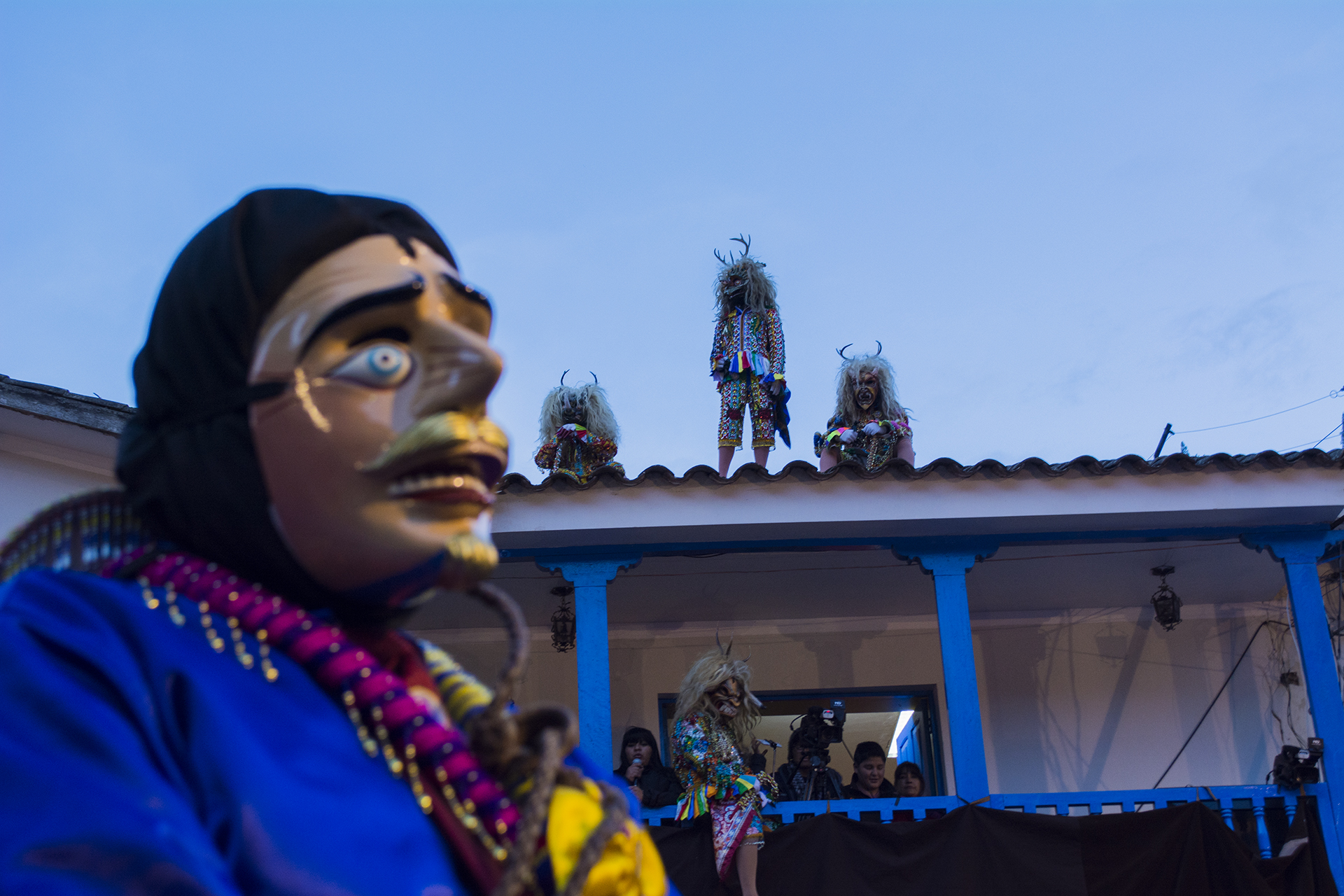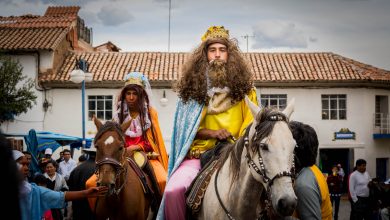Power, Pasion, and Drama in Paucartambo

The festivity of the Virgin of Carmen brings together joy, fiesta, color and faith. The thousands of pilgrims who arrive, nationals and foreigners, fill the small town of Paucartambo. The majority of the homes where they offer rooms are filled since they are rented in advance. Those who do not find a room have the option of camping in the less traveled streets, along the Mapacho river, or to the side of the main church where the image of the Virgin rests.
In his celebration are combined enormous faith in the Virgin as well as traditional dances and music from Paucartambo.

It took me some three hours to get here from the city of Cusco in a bus in order to arrive for the serenata. I left Cusco at 9 pm and made it around 12:15 in the morning. Everything looked full. There was a large fair of products, food, and clothing in the streets and everyone seemed to be going in the direction of the main plaza, almost touching shoulders. The people were well bundled with their coats, chullo caps, and scarves. When I finally arrived at the plaza it was well illuminated. I found groups of people in circles, laughing and sharing cups of beer or rum together with different dancers dressed in their costumes. The fireworks made the sky turn to light and color for a bit and the bands of the dance troupes played through the night.
The morning of the 16th, the main day, the devout wait patiently from 5 am for the blessing of the Virgin in the Mass at Dawn. From inside the chapel out into the street it shares peace in each song and each prayer. All space is full and it looks like a colorful carpet of dancers and faithful. It reaches the altar of the Mamacha Carmen inside. This mass lasts until 7:30 am. Then the dancers show the best of their steps in the door of the chapel until around 10 am. At that time the main mass begins. In this representation of faith in the Virgin of Carmen, the sounds of the Qolla dancers bring tears and strong feeling in all present. All has the end of paying tribute and pleasing the Virgin while also receiving her miracles.

In this small town, the 16 troupes of dancers carry out their cargos in houses that are located on different streets. Walking in the midst of the people and all the commerce I arrived at the cargo of the Maqtas. More than 500 people were present and they were seated in long tables where they awaited the waiters who brought them platters of lechón (roast pork) for each of them. To the beat of varied music everyone enjoyed their plate. After the great lunch, everyone returned to the plaza to get a spot and watch the dances go by as well as the Virgin after her long procession through the streets.

The central plaza of Paucartambo now fills with people. It is a bit tragic since everyone is so tightly packed and they push each other from one side to another. When he Virgin makes her entrance to the plaza, the Saqras are waiting in the roofs of the large houses and on the balconies performing their role of drawing the virgin with their staffs and their laughter.
After the procession, people return to the church and once again the night fills with fiesta to the measures of the bands and the songs of all present.
On the 17th, the day of the guerrilla, the ritual battle, people continue arriving. All the dancers and their troupes gather to go to the town’s cemetery to salute all their members who have passed on. There at the graves of dancers from other eras they give a welcome to the new members.

In the cemetery I went looking for the Maqtas since the day before I had made a friend among them named Maicol. He invited me to be present for his baptism as a dancer. He told me that he would be whipped twelve times, 6 for each godfather. There are also those who receive more than 12. It all depends on how many godfathers they have.
I arrived with the Maqtas. They were located by a tomb dressed in their costumes and masks, all of them singing and drinking cases of beer. In a circle protected by the dancers, the new members were waiting in a line. The older dances held them by their feet and hands, while they were face down, so that their godfathers could give them their whipping. In this way they were baptized, welcomed into the troupe. It was not just a whipping, they was also given hugs. The same happened with the other dance troupes.
After the cemetery all the dancers returned to their different cargos to eat, drink, and then return to the plaza.
Around 3 pm the guerrilla, the ritual battle, began. All the troupes danced around the plaza, showing their faith and devotion while demonstrating their choreography. The Antis and the Qollas fought in their movement through the plaza for the love and warmth fo the Virgin. The Saqras, Maqtas, Wakawakas, and Chucchus, also participated. The whole path filled with color, party, games, and dances. The theatre of battle holds religious, social, and cultural value. In the costumes, the dancers maintain Andean identity and customs.
The Qollas stand for the highlands and the Chunchus for the lowlands. In this theatre the Qollas defend with their slings (hauracas) and the Chunchus use their spears and arrows. It all lasts for about an hour. The Qollas then travel around the plaza and escape in their flaming, smoking cart. It is all very colorful and festive. Those who watch from behind also live the fiesta since just by being there they can laugh with those present and play with the dancers. This makes the fiesta a beautiful custom and gives unique memories.




